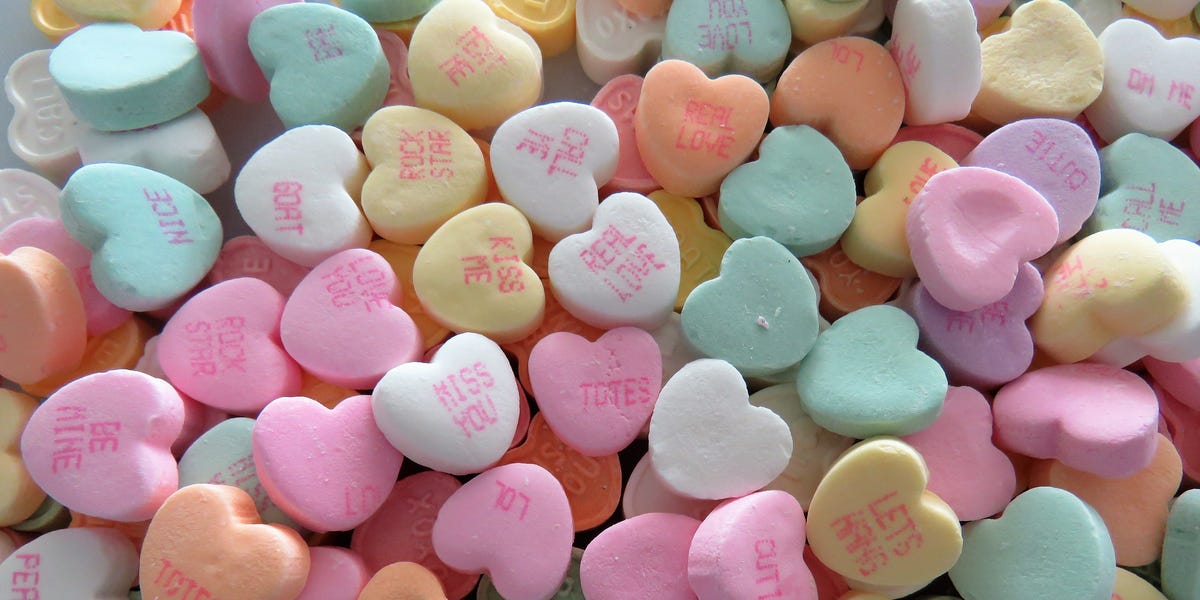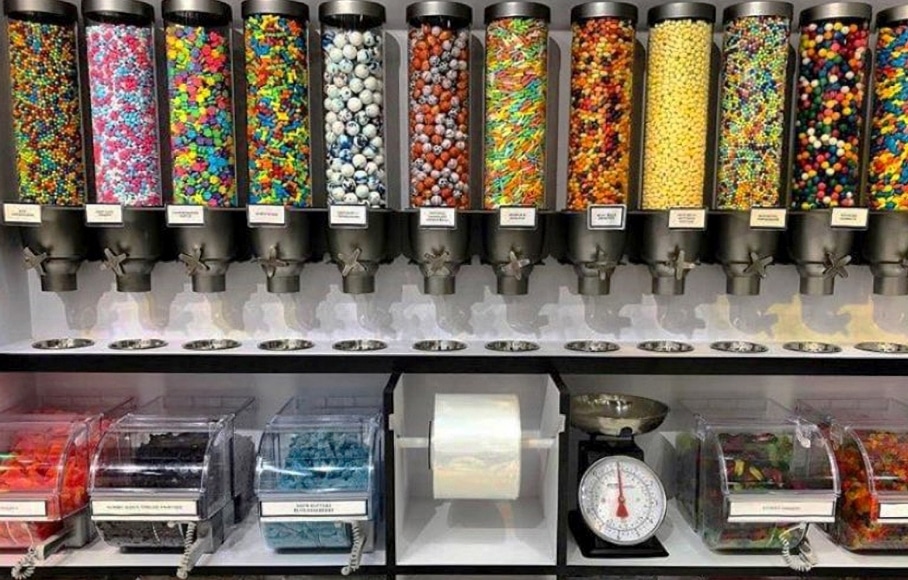How I Luv Candi can Save You Time, Stress, and Money.
Table of ContentsI Luv Candi for DummiesWhat Does I Luv Candi Do?The 6-Minute Rule for I Luv CandiHow I Luv Candi can Save You Time, Stress, and Money.Little Known Questions About I Luv Candi.
We have actually prepared a lot of company plans for this kind of job. Right here are the typical client sections. Customer Segment Description Preferences How to Find Them Kids Youthful customers aged 4-12 Vivid sweets, gummy bears, lollipops Companion with regional institutions, host kid-friendly events Teens Adolescents aged 13-19 Sour candies, uniqueness things, stylish deals with Engage on social media sites, work together with influencers Moms and dads Grownups with young youngsters Organic and much healthier alternatives, nostalgic candies Deal family-friendly promos, advertise in parenting magazines Students Institution of higher learning trainees Energy-boosting candies, inexpensive snacks Companion with close-by schools, promote throughout examination periods Gift Customers People seeking presents Costs chocolates, gift baskets Create eye-catching display screens, offer personalized gift options In assessing the monetary dynamics within our sweet-shop, we have actually discovered that customers normally spend.Monitorings suggest that a typical consumer often visits the store. Particular periods, such as vacations and special celebrations, see a surge in repeat visits, whereas, throughout off-season months, the frequency could dwindle. da bomb. Calculating the life time worth of a typical consumer at the sweet-shop, we estimate it to be
With these aspects in factor to consider, we can deduce that the typical earnings per customer, over the program of a year, floats. The most profitable consumers for a sweet store are typically family members with young children.
This demographic has a tendency to make constant acquisitions, enhancing the store's profits. To target and attract them, the sweet-shop can employ vibrant and lively advertising and marketing strategies, such as dynamic screens, memorable promos, and perhaps even holding kid-friendly occasions or workshops. Developing an inviting and family-friendly ambience within the store can also improve the general experience.
Getting My I Luv Candi To Work
You can additionally estimate your very own earnings by using various assumptions with our financial prepare for a candy shop. Ordinary regular monthly profits: $2,000 This sort of sweet-shop is often a small, family-run business, probably understood to residents but not attracting great deals of vacationers or passersby. The store might supply an option of usual candies and a few homemade deals with.
The shop doesn't generally lug uncommon or costly products, focusing rather on affordable deals with in order to preserve regular sales. Thinking a typical spending of $5 per customer and around 400 consumers monthly, the monthly earnings for this candy shop would be approximately. Ordinary regular monthly revenue: $20,000 This sweet-shop benefits from its tactical area in a hectic urban area, bring in a big number of consumers trying to find sweet indulgences as they go shopping.
Along with its varied candy choice, this shop might additionally offer related products like present baskets, candy bouquets, and uniqueness items, supplying numerous revenue streams - sunshine coast lolly shop. The shop's location needs a greater budget for rent and staffing yet leads to higher sales volume. With an approximated ordinary spending of $10 per client and regarding 2,000 consumers per month, this store might produce
Some Known Incorrect Statements About I Luv Candi
Situated in a major city and traveler destination, it's a huge facility, commonly spread over multiple floors and possibly component of a national or international chain. The shop uses an enormous variety of sweets, including exclusive and limited-edition things, and product like well-known clothing and accessories. It's not simply a store; it's a location.
These destinations assist to attract countless visitors, dramatically enhancing potential sales. The functional costs for this kind of store are considerable due to the place, size, personnel, and features used. The high foot traffic and typical spending can lead to significant earnings. Presuming an ordinary purchase of $20 per client and around 2,500 consumers per month, this front runner shop could accomplish.
Category Examples of Expenditures Typical Monthly Expense (Variety in $) Tips to Lower Expenses Rent and Utilities Store lease, power, water, gas $1,500 - $3,500 Think about a smaller sized area, bargain rent, and use energy-efficient illumination and home appliances. Supply Sweet, treats, product packaging materials $2,000 - $5,000 Optimize stock administration to minimize waste and track preferred things to stay clear of overstocking.
Marketing and Marketing Printed materials, on the internet ads, promos $500 - $1,500 Focus on economical electronic advertising and make use of social media sites systems free of cost promo. camel balls candy. Insurance policy Organization responsibility insurance policy $100 - $300 Search for competitive insurance coverage rates and consider packing plans. Devices and Maintenance Sales register, show racks, repair services $200 - $600 Buy previously owned equipment when feasible and carry out regular upkeep to expand equipment lifespan
I Luv Candi Things To Know Before You Buy
Bank Card Processing Charges Fees for refining card payments $100 - $300 Bargain lower handling fees with settlement processors or check out flat-rate options. Miscellaneous Office supplies, cleaning up supplies $100 - $300 Get wholesale and try to find price cuts on materials. A sweet store ends up being profitable when its overall revenue exceeds its overall fixed prices.

A large, well-located sweet store would undoubtedly have a higher breakeven factor than a little shop that doesn't require much income to cover their expenses. Interested about the productivity of your sweet-shop? Try our straightforward monetary strategy crafted for sweet-shop. Simply input your very own presumptions, and it will aid you calculate the quantity you need to make in order to run a profitable service.
The Only Guide for I Luv Candi

Finally, economic slumps that lower customer costs can influence sweet-shop sales and profitability, making it important for sweet-shop to handle their costs and adjust to changing market conditions to remain lucrative. These dangers are typically consisted of in the SWOT analysis for a sweet-shop. Gross margins and net margins are essential signs used to evaluate the productivity of a candy shop organization.
Essentially, it's the profit staying after deducting expenses directly associated to the sweet stock, such as acquisition prices from providers, manufacturing prices (if the sweets are homemade), and team incomes for those included in manufacturing or sales. Net margin, alternatively, elements in all the costs the sweet-shop useful content sustains, consisting of indirect costs like administrative costs, advertising and marketing, rental fee, and taxes.
Candy stores normally have an average gross margin.For circumstances, if your candy store gains $15,000 per month, your gross profit would certainly be about 60% x $15,000 = $9,000. Consider a candy shop that offered 1,000 candy bars, with each bar priced at $2, making the complete revenue $2,000.